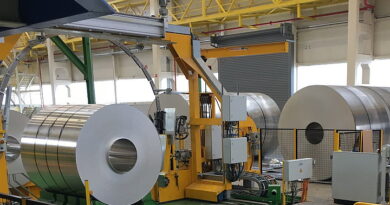Recycled tin from end-of-life solar tech
Researchers in Kunming, China have developed an environmentally friendly method to recover valuable metals, including tin, from photovoltaic (PV) ribbon waste, a rapidly growing component of end-of-life solar panels. Their two-step physical process separates copper, tin, and lead without using corrosive chemicals or generating harmful waste.
Tin use in PV solar ribbon has grown to more than 45,000 tpa over the last decade. The ribbons are slender copper strips coated with tin–lead solder that link solar cells and conduct electrical current. As global solar panel installations increase, the volume of PV waste is expected to surge, posing both an environmental challenge and a resource recovery opportunity for tin.
PV ribbons typically contain around 80% copper, 8% tin, and 5% lead by weight. Recycling just one tonne of this material can recover up to 24,000 yuan (~£2,500) in tin value and 56,000 yuan (~£5,850) in copper.
Traditionally, metal recovery from PV ribbons relies on hydrometallurgical techniques involving strong acids and complex chemical steps, which are costly and produce secondary waste. In contrast, researchers in Kunming have developed a cleaner route using only heat and vacuum.
First, they melted the Sn–Pb solder from the copper substrate at 723 K (~450 °C), yielding clean copper strips and a Sn–Pb alloy with minimal contamination. Next, they applied vacuum distillation at 1423 K (~1,150 °C) under low pressure (50 ± 10 Pa) to selectively evaporate and collect ultra-pure lead. Crucially, tin remained in the residue, effectively separated due to its much lower vapor pressure. This left behind a tin-rich alloy alongside copper ready for further processing or reuse.
By exploiting simple physical properties like melting point and vapor pressure, this method avoids chemicals entirely. It offers a high-efficiency, low-waste solution aligned with circular economy goals.
With tin playing a vital role in solar technology, not just in PV ribbons but also in light absorbers and electron transport layers, this study provides a cleaner, scalable path to reclaim tin from retired solar modules.




